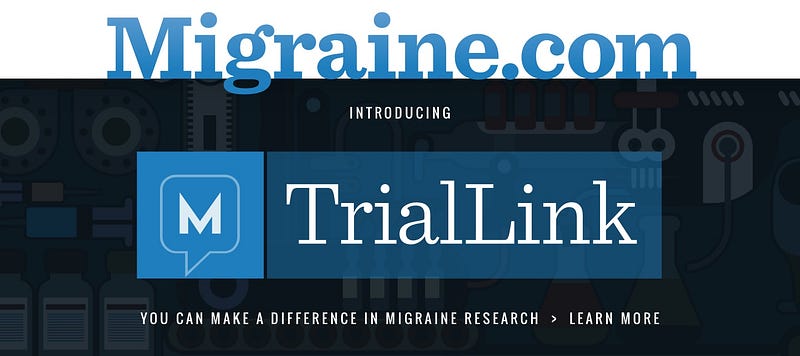Considerations for Building Financially Stable Online Communities
By Amrita Bhowmick, MBA, MPH
Chief Community Officer – Health Union
December 2, 2015
Over the past several years, there has been a significant growth in the popularity of online communities, and as one may expect, there are a multitude of challenges associated with developing these seemingly robust communities into self-sustaining businesses. In 2013, the CEO of Reddit, for instance, reported that despite having 70 million monthly readers, his company wasn’t making money. More recently, Jack Dorsey, the CEO of Twitter, announced (via a tweet), that there would be company layoffs to “move with greater focus and reinvest in our growth.” A viable business model is absolutely critical to maintain thriving and sustainable communities.
The inability to financially support a community will likely result in that community being forced to close its virtual doors, leaving its many members without their familiar online home.
With this level of volatility among the many online communities that may be struggling to survive, I have an even greater appreciation for the unique and incredibly successful business model that my company, Health Union, employs.
At Health Union, we own, and manage, and grow multiple condition-specific health communities including Migraine.com, MultipleSclerosis.net,RheumatoidArthritis.net, Type2Diabetes.com, HepatitisC.net, and COPD.net. Our goal is to provide all of our services — including original editorial content, community support, and community-based research — free to all of our members (membership is also free). Many of our members struggle with access to healthcare and emotional support. While we do not provide personal medical advice, our free communities can provide a variety of resources that may otherwise remain out of reach. Our business model enables healthcare companies to connect, interact and engage with our patient communities in transparent ways, such as media and advertising, market research, and clinical trial services.
All of our existing communities experience consistent growth in social media reach, visits and repeat visitors, as well as registered memberships, and we expect this growth to continue over time.
Most importantly, our community model is sustainable without requiring financial investment from any outside entities such as venture capitalists. This means we can focus on our priorities, which means focusing on the needs of our members.
While this strategy may sound simple at first, making sure we meet the ever-changing needs of each of our unique communities is a complex endeavor, and one that requires a great deal of thought and consideration. Doing this in a way that simultaneously supports a sustainable business model can be even more challenging. Here are a few basic principles we focus on:
Put the community first
As community managers and as a business overall, our number one priority is, and always will be, to meet the needs of our community members.
Our communities aren’t an afterthought or a support function — they are the core of our business.
It’s easy to be distracted by a new business opportunity or a partner with a great idea, but the only way to continuously bring value to the community is to ensure their needs are put first.
Ultimately, any initiative is most likely to be successful when it’s community-focused, regardless of the overall objective. Whether partner-driven, technology-driven, or otherwise, think long-term when considering business opportunities. Any project, as alluring as it may be from a financial standpoint, is never worth any short-term revenue boost if it jeopardizes the relationship with our community.
Look for win-win opportunities
Our platforms can serve as a liaison between community members and researchers, manufacturers, scientists, and more. We provide the most value when we are able to connect members with opportunities they may not otherwise have access to.
For example, our community members often participate in market research studies for which they provide valuable patient insights. Our communities want to share their experiences, opinions and feedback with the companies involved in their healthcare, and so we find opportunities that enable them to do that. In one recent survey we fielded, members were asked to provide feedback regarding the preferred delivery method (injection vs infusion) for a new treatment product currently in development. In addition to truly shaping product development to focus on patients’ needs, participants were compensated for their time.
Connecting patients with cutting edge clinical trials is perhaps one of the most impactful initiatives we’ve undertaken to date. Our research found that 69% of patients are interested in clinical trials, but only 12% have actually participated. For many community members, we provide the opportunity to participate in clinical research trials that may not otherwise be accessible.

Health Union’s TrialLink programs connect patients with leading researchers
While these win-win opportunities are the ideal fit for our communities and our business, there are always situations where one will benefit more so than the other. Occasionally we will publish articles that cannot be supported by advertising due to legal restrictions (for example, an article discussing the author’s experience with medication side effects). These articles are extremely beneficial from a community perspective, but less so from a business standpoint. We understand that there’s a constant balance to maintain the integrity of the relationship with our communities while meeting business objectives.
Maintain appropriate boundaries
Maintaining the independence of editorial content from advertisers’ and partners’ influence is absolutely critical, and we have several measures in place to support editorial integrity. Our community teams may provide feedback to our internal business development team when it is critical to maintain a positive user experience (for example, bright flashing advertisements can act as a migraine trigger). However, partners and advertisers are never given the opportunity to review or otherwise approve authors, topics, or articles for editorial content. In fact, a “separation of church and state” is built into our organizational structure to ensure the community team is never directly interacting with paying clients.
Ruthlessly prioritize
We always strive to provide our communities with the best possible experience, however we also understand that it isn’t possible to pursue every opportunity.
Resources are finite, and this means even some great ideas are put on hold to ensure we can continue doing what we’re doing — and do it well.
After an evaluation of engagement levels across platforms, we recently made the difficult decision to scale back our activity on Twitter. A compromise was made to remain accessible on Twitter for members who need us, while shifting our focus to other platforms with more activity. Trying to remain equally active on all social media platforms was simply unsustainable, and could compromise the overall community experience. Maintaining a safe and responsive environment is essential to our success, and we always need to ensure our priorities and resourcing support this objective.
Focus on transparency and trust
The importance of maintaining an open and honest relationship with our communities cannot be stressed enough. If any content on our sites is a paid advertisement, it is always clearly marked as such. Sponsored articles are published under their own category (with the paying client noted as the author), and sponsored emails are sent from an email address independent of all other site communications. Additionally, we limit the number of sponsored emails and other such activities as to not overwhelm the community with sponsored content.
Community members trust us because we’ve given them every reason to, and no reason not to.
We don’t sell members personal information, including email addresses. We appreciate that personal information is just that — personal. And this is, of course, even more sensitive in the health space.
At Health Union, we view community management as a long-term relationship, which is especially critical for health communities of patients with chronic conditions. We never try to make decisions based on a single interaction or a short-term business opportunity, as our goal is to maintain an ongoing relationship with our members for years to come. And because we work with a group of experts on each of our sites, we are always considering the unique needs of each of our communities when evaluating the potential of a new initiative. Always, our goal is to create win-win partner opportunities that benefit our communities AND our clients.
Because ultimately, this is what’s good for community, and what’s good for community is good for business.
Read the full original article here.



